Union Block
Introduction
Text-to-speech Audio
Constructed of brick and faced in stone from Tablerock quarries, this commercial structure features five stone arches on the second story and was completed in 1902. The building's construction occurred during a period of rapid growth for Boise, and in the decades that followed, this structure has held a number of businesses in its five sections, including a sausage factory, a dance studio, and a roller-skating rink. The Union Block was documented by the Historic American Buildings Survey in 1980 and was added to the National Register of Historic Places in 1979 for its distinctive architecture, along with the adjacent stone building at the corner, the Montandon (or Fidelity) Building (1908). Moon's Kitchen and Cafe is one of the tenants on the ground floor (712); another is a home decor retailer, Balsam Brands (718),
Images
Five-arched Union Block building in 2019 photo (Tamanoeconomico)
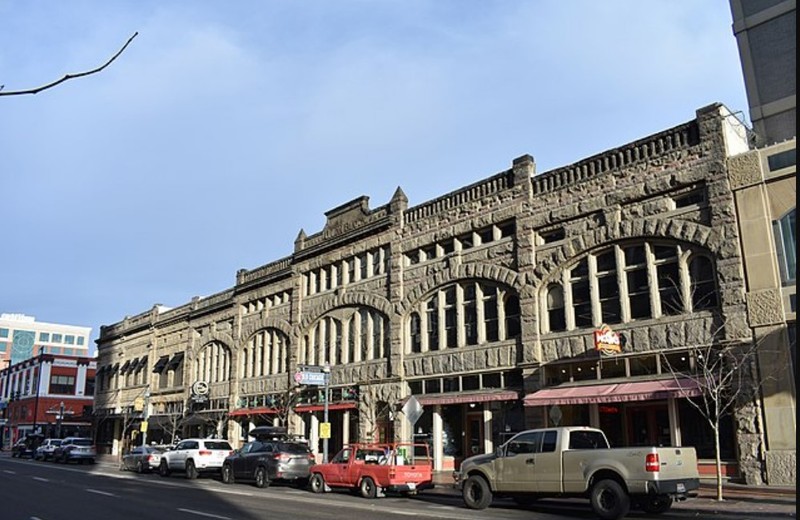
Architect's sketch of front of Union Block from Boise newspaper, Idaho Statesman, Jan. 1, 1902 (J.E. Tourtelotte)
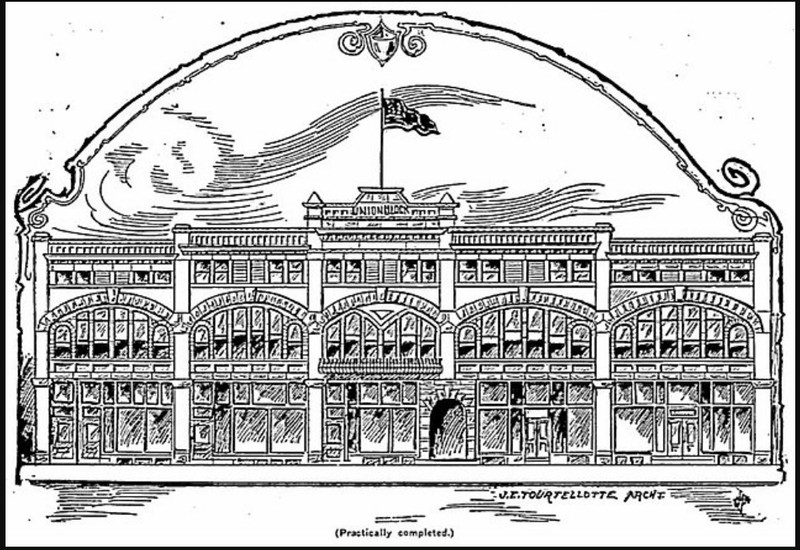
Union Block (purple bracket) on 1903 Sanborn map (p. 13)
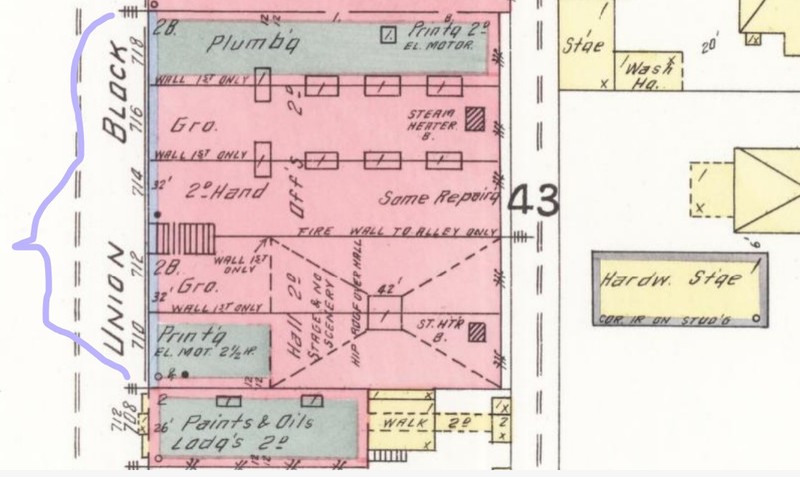
South (main) facades of Union Block in 1980 photo for Historic American Buildings Survey (Duane Garrett, HABS ID-20)
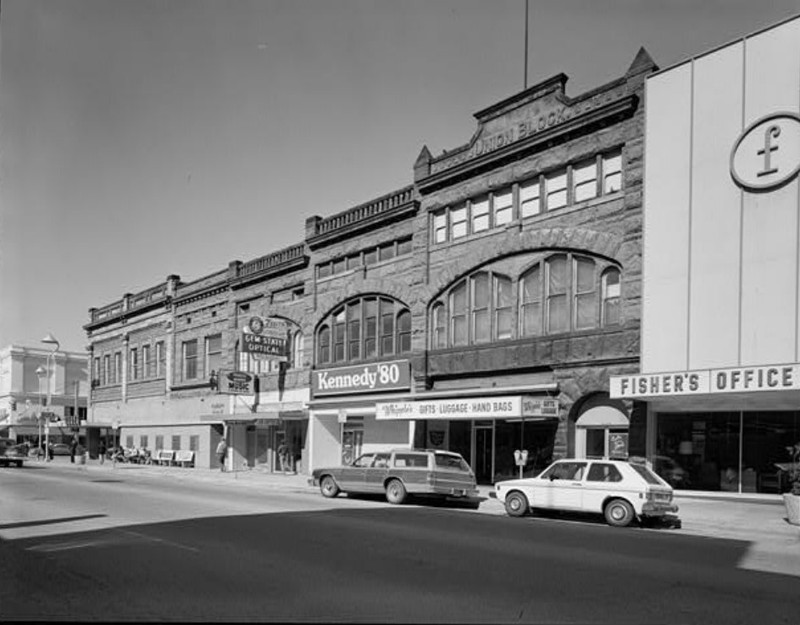
Interior view of west half of arched windows, tallest section of Union Block in 1980 (Garrett, HABS ID-20)
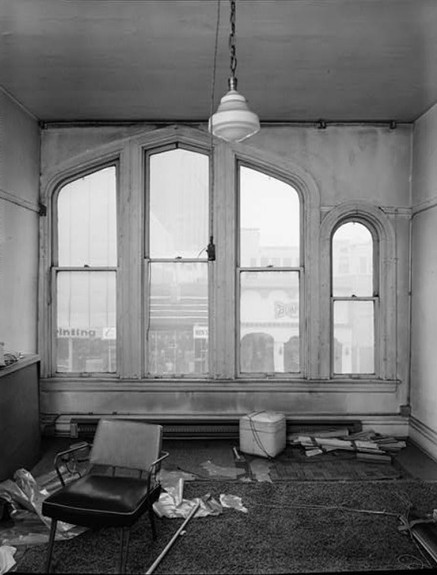
Second floor hallway of Union Block below skylights in 1980 HABS photo (Garrett, HABS ID-20)

Union Block (green bracket) on 1912 Sanborn map (p. 49)
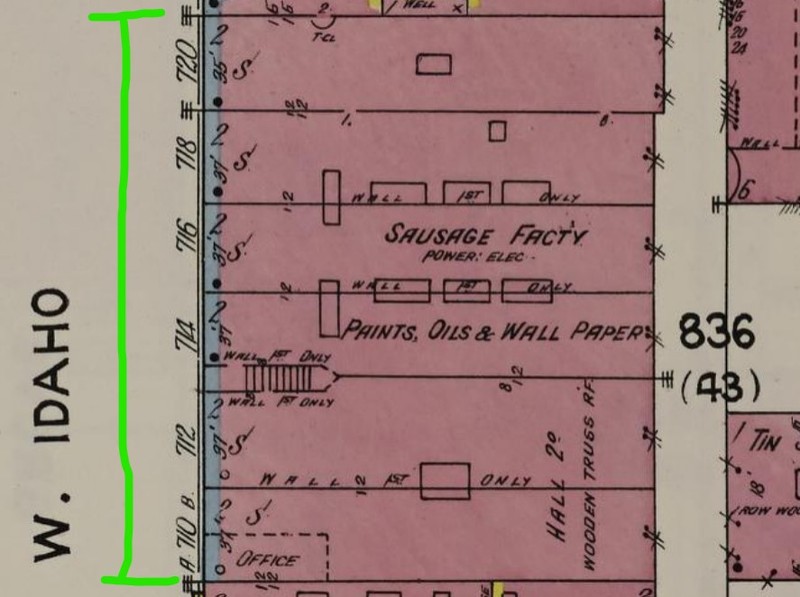
Backstory and Context
Text-to-speech Audio
Boise architect John E. Tourtellotte designed the Union Block in 1899 in the Richardson Romanesque style. Constructed of brick and stone from Tablerock quarries, the commercial structure of two stories plus a basement was finished by contractor J.W. Smith in 1902. The building is 125 feet wide with five large arches across the front filled with some of the second-story windows. The front facades are stepped in height, with the central section having the most elaborate and tallest parapet wall reading "UNION BLOCK" above a band of clerestory windows. Union Block cost $35,000 to build and was financed by a syndicate of Boise's movers and shakers, including then-Mayor, Moses Alexander and John Green, the Commandant General of Fort Boise.
The interior was divided into five narrow spaces on the first floor; each section or pair of sections had its own owner and address. In 1903, the tenants in the five commercial storefronts were plumbers, two grocery stores, a second-hand store, and a printing company. The hall above the two eastern spaces contained a stage but no scenery. The 1912 Sanborn map revealed that one space was a sausage factory with electric-powered machines while another sold paints, oils, and wallpapers; the other three were stores. The Capitol News and Printing Company was one of the early tenants; others were the Boise Mercantile, the OK Grocery Store, and A.M. Beal's furniture shop. The first-floor spaces have also held a drug store and a variety of restaurants. The east end of the second-floor space has been the site of a roller-skating rink, a dance studio, and most recently a ballroom/ events venue named the Rose Room. There are office spaces on the rest of the second floor which have been occupied by attorneys, real estate agents, and architects. Pyramid-shaped skylights top the central hallway with office spaces to either side. Original doors and woodwork survived on much of the second floor in 1980 when the building was studied for the Historic American Buildings Survey.
In the 1960s, the building was slated to be demolished but was saved. The Boise Redevelopment Company acquired each of the five sections in the late 1970s and early 1980s. The Union Block was renovated in the early 1990s by Ken Howell after being nearly vacant for fifteen years. A false front made of perforated aluminum panels that had been added in 1963 to the two eastern sections (covering the arched facades) was removed, exposing the original stonework. The first-floor facades have been modernized except for the stone arched doorway near the center that leads to the upper level.
Sources
Burns, Brandi. Brooks, Leslie Madsen. Union Block, Boise - Localwiki. Accessed January 18th, 2023. https://localwiki.org/boise/Union_Block.
Hibbard, Don. NRHP nomination of Union Block and Montandon Buildings, Eighth and Idaho, Boise, Idaho. National Register. Washington, DC. National Park Service, 1978.
Preservation Idaho. Union Block Building, Idaho Architecture Project. January 1st, 2022. Accessed January 18th, 2023. https://www.idahoarchitectureproject.org/properties/union-block-building/.
Rowse, Patricia. Hunsucker, C. Wayne. Historic American Buildings Survey documentation of Union Block, 710-720 W. Idaho Street, Boise, Idaho. HABS ID-20. Washington, DC. Department of the Interior, 1980.
Sanborn Map Company. Map of Boise, Ada County, Idaho. New York, NY. Sanborn Map Co., 1903.
Sanborn Map Company. Map of Boise, Ada County, Idaho. New York, NY. Sanborn Map Co., 1912.
https://en.wikipedia.org/wiki/Union_Block_and_Montandon_Buildings#/media/File:Union_Block_and_Montandon_Building_(1).jpg
https://commons.wikimedia.org/wiki/File:Union_Block_(practically_completed).jpg
Library of Congress (LOC): https://www.loc.gov/item/sanborn01569_004/
LOC: https://www.loc.gov/pictures/collection/hh/item/id0034/
LOC: https://www.loc.gov/pictures/collection/hh/item/id0034/
LOC: https://www.loc.gov/pictures/collection/hh/item/id0034/
Library of Congress (LOC): https://www.loc.gov/item/sanborn01569_005/
